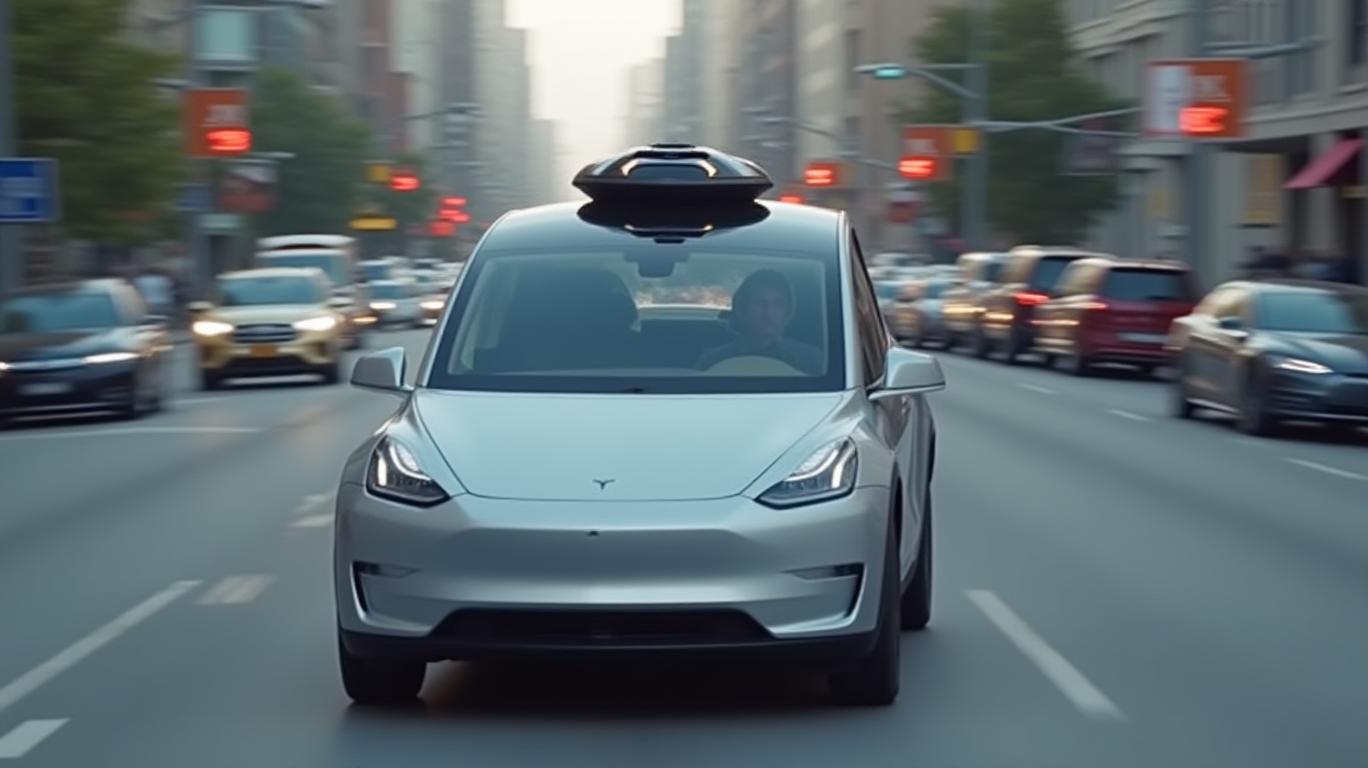Tesla's Autonomous Ambition: Can Musk's 1,300% Upside Claim Survive Execution Hurdles?
The electric vehicle revolution has already begun, but Tesla's next chapter hinges on its ability to transform into a full-stack AI and robotics powerhouse. CEO Elon Musk's audacious claim that
could achieve a 1,300% valuation upside—surpassing the combined $14 trillion market cap of Apple, Microsoft, Amazon, Alphabet, and NVIDIA—has ignited fierce debate. While the stock's rebound in early 2025 has fueled optimism, skeptics question whether Tesla's autonomous driving ambitions, robotaxi rollout, and Optimus robotics progress can justify its $1 trillion valuation amid execution risks and intensifying competition.
The 1,300% Upside: Musk's AI Moonshot
Musk's valuation target is not mere hyperbole; it's rooted in Tesla's plan to dominate three transformative markets: autonomous ride-sharing (robotaxis), AI-driven manufacturing via Optimus humanoid robots, and energy storage. By 2025, Musk aims to deploy millions of robotaxis using its fleet of 2.1 million vehicles—a crowdsourced army of self-driving cars—while Optimus robots could streamline factory automation. Tesla's Full Self-Driving (FSD) software, now generating $1.2 billion in revenue annually, is the linchpin. Musk argues that its computer-vision-based system, trained on data from 1.5 million cars, will outperform rivals reliant on expensive lidar sensors.
Yet, the path to $15 trillion is littered with obstacles. The robotaxi launch in Austin—scheduled for June 2025—is a critical test. Analysts doubt Tesla can scale to 99% market share in ride-hailing, as Musk claims, given regulatory hurdles, liability risks, and competition from Waymo and Cruise. Meanwhile, Optimus's progress remains opaque. While Tesla reported record energy storage profits ($2.3 billion in Q1 2025), Optimus's “thousands of robots in factories by 2025” goal faces technical and cost barriers.
Valuation: Optimism vs. Reality
Tesla's current $1 trillion valuation already assumes success in these ventures. To hit Musk's target, analysts estimate annual revenue growth of 30%+ through 2030, up from 17.5% in 2025. The median Wall Street price target of $277.78 (a 20% downside from May 2025 highs) reflects skepticism about execution. Conversely, bullish analysts like 24/7 Wall St. see a $353 price target by 2026, citing Tesla's potential to capture $300 billion in annual robotaxi revenue alone.
Critics, however, highlight red flags:
- Slowing EV sales: Tesla's Q1 deliveries fell 50,000 year-over-year, with U.S. market share dipping below 50% for the first time.
- Competitor surge: Chinese automakers like BYD are outpacing Tesla in global markets, while U.S. tariffs threaten margins.
- Musk's distractions: His focus on Neuralink, SpaceX, and a $56 billion shareholder-approved pay package raise concerns about divided priorities.
Why Now Could Be the Inflection Point
Despite risks, Tesla's data advantage and first-mover momentum in AI could tip the scales. Its fleet's 20 billion miles of real-world driving data—unmatched by competitors—could accelerate FSD's evolution. The June robotaxi launch, if successful, could redefine transportation economics, slashing costs for riders while generating recurring revenue.
Moreover, Musk's $250 billion battery gigafactory pipeline and $3,000 AI chip production plans aim to lock in cost leadership. Even if robotaxis take years to scale, Tesla's energy storage and AI-infused vehicles could sustain growth.
The Bottom Line: A High-Reward, High-Risk Gamble
Tesla's valuation is a bet on Musk's vision over reality. The stock's 57% rebound from early 2025 lows signals investor optimism, but it remains 30% below its 2021 peak. Bulls argue that missing quarterly targets won't derail Tesla's long-term dominance in AI-driven mobility. Bears counter that execution failures—like the 2024 Cybertruck delay—will amplify losses.
Investors must decide: Is Tesla's stock a once-in-a-decade opportunity to own the next trillion-dollar AI conglomerate, or a valuation bubble inflated by Musk's charisma and shareholder inertia? For those with a 5- to 10-year horizon, the former case is compelling—if Tesla can execute. For shorter-term players, the risks of regulatory setbacks, margin erosion, and Musk's multitasking outweigh rewards.
The verdict? Buy Tesla if you believe in Musk's AI moonshot—and are prepared for volatility. The 1,300% upside is possible, but so are 1,300% execution pitfalls. The next 12 months will be pivotal: Robotaxi launches, FSD software upgrades, and Optimus milestones will either validate Tesla's vision or expose its overreach.
Disclosure: This analysis is for informational purposes only and does not constitute financial advice. Always conduct independent research or consult a financial advisor before making investment decisions.

Comments
No comments yet